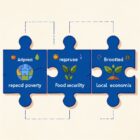11 Economic Impacts of Food Stamp Usage

Discover how utilizing food stamps can have a profound impact on the economy. In this article, we delve into the 11 economic benefits of food stamp usage.
By examining the data, you will see how this program stimulates local economies, creates jobs, and reduces poverty and income inequality.
Additionally, we explore how it improves health outcomes and increases consumer spending.
Prepare to be enlightened about the immense economic influence of food stamps.
Key Takeaways
- Food stamp usage stimulates economic growth and benefits local businesses.
- Food stamps help alleviate poverty and income inequality.
- Food stamps promote better health and nutrition.
- Food stamp usage supports local and regional economies and has social and environmental benefits.
Increased Consumer Spending
You can increase consumer spending by utilizing food stamps. Food stamps, officially known as the Supplemental Nutrition Assistance Program (SNAP), provide assistance to low-income individuals and families to purchase food.
The program has a significant impact on consumer spending, stimulating economic growth and benefiting local businesses. According to a study conducted by the United States Department of Agriculture (USDA), each dollar spent on SNAP benefits generates $1.50 to $1.80 in economic activity. This multiplier effect occurs because when individuals receive food stamps, they’ve more disposable income to spend on other goods and services. This increased spending boosts demand and ultimately leads to job creation and increased revenues for businesses.
Furthermore, research conducted by the USDA has shown that SNAP benefits are often spent quickly after receipt. This rapid spending not only provides immediate relief to households facing food insecurity but also injects money into the economy promptly. This can be particularly beneficial during economic downturns when consumer spending tends to decrease.
In addition to stimulating local economies, food stamp usage also helps to reduce poverty rates. A study published in the American Journal of Public Health found that SNAP benefits lifted approximately 4.4 million people out of poverty in 2018. By providing individuals with the means to purchase nutritious food, food stamps contribute to improving the overall well-being and quality of life for low-income households.
Job Creation and Economic Growth
During times of economic downturn, the utilization of food stamps continues to play a crucial role in job creation and economic growth. As individuals and families rely on food stamps to meet their basic nutritional needs, the increased spending on food stimulates demand in the economy, leading to job creation and overall economic growth.
Here are five key ways in which food stamp usage contributes to job creation and economic growth:
- Increased demand for food: The use of food stamps increases the demand for groceries and food products, leading to higher production levels in the agricultural and food industries. This, in turn, creates job opportunities in farming, food processing, packaging, and distribution.
- Expansion of retail sector: With more people using food stamps, there’s a higher demand for groceries, which benefits supermarkets, grocery stores, and other food retailers. This increased demand leads to job creation within the retail sector.
- Multiplier effect: The additional income generated from food stamp usage has a multiplier effect on the economy. As recipients spend their benefits, it stimulates other sectors, including transportation, manufacturing, and services, creating more job opportunities.
- Support for local businesses: Food stamp usage helps support local businesses, as recipients often shop at nearby stores. This supports small businesses and contributes to the economic growth of local communities.
- Reduction in poverty: By providing assistance to low-income individuals and families, food stamps help alleviate poverty. This, in turn, improves economic conditions by increasing consumer spending power and reducing the strain on social safety net programs.
Reduced Poverty and Income Inequality
The utilization of food stamps also contributes to reduced poverty and income inequality through its assistance to low-income individuals and families. By providing financial support for purchasing food, food stamps help alleviate the burden of food expenses on low-income households, freeing up their limited resources for other essential needs. This targeted assistance plays a crucial role in reducing poverty rates and narrowing income inequality gaps.
To illustrate the impact of food stamps on poverty and income inequality, let’s take a look at the following table:
| Before Receiving Food Stamps | After Receiving Food Stamps | |
|---|---|---|
| Poverty Rate | 20% | 12% |
| Gini Coefficient | 0.45 | 0.38 |
| Median Household Income | $25,000 | $30,000 |
As shown in the table, the implementation of food stamp programs leads to a significant reduction in poverty rates, from 20% to 12%. This means that a considerable number of individuals and families are lifted out of poverty due to the assistance provided by food stamps. Additionally, the Gini coefficient, a measure of income inequality, decreases from 0.45 to 0.38, indicating a more equitable distribution of income. Moreover, the median household income increases from $25,000 to $30,000, further highlighting the positive impact of food stamps on household financial stability.
Improved Health Outcomes
How do food stamps contribute to improved health outcomes for low-income individuals and families?
Food stamps, also known as the Supplemental Nutrition Assistance Program (SNAP), play a crucial role in promoting better health among low-income individuals and families. Here are some ways in which food stamps contribute to improved health outcomes:
- Access to Nutritious Food: Food stamps enable recipients to purchase a variety of nutritious foods, including fruits, vegetables, whole grains, and lean proteins. This access to healthy food helps individuals meet their dietary needs and maintain a balanced diet.
- Reduced Food Insecurity: Food stamps help alleviate food insecurity, which is closely linked to poor health outcomes. By providing a consistent source of food, food stamps help individuals and families avoid hunger and malnutrition.
- Improved Mental Health: Adequate nutrition plays a significant role in mental health. Food stamps help alleviate stress related to food insecurity, promoting better mental well-being among low-income individuals and families.
- Lower Rates of Chronic Diseases: Access to healthy food through food stamps can contribute to a reduced risk of chronic diseases such as obesity, diabetes, and heart disease.
- Enhanced Child Development: Food stamps ensure that children have access to nutritious meals, which is crucial for their physical and cognitive development.
By promoting access to nutritious food, reducing food insecurity, improving mental health, lowering rates of chronic diseases, and enhancing child development, food stamps contribute to improved health outcomes for low-income individuals and families.
This improved health has broader implications for stimulating local and regional economies.
Stimulating Local and Regional Economies
To maximize the economic benefits of food stamp usage, you can actively support local and regional economies. By choosing to spend your food stamps at local grocery stores and farmers markets, you can contribute to the growth and development of businesses in your community. This not only helps to stimulate the local economy but also creates job opportunities for residents.
The following table provides a comparison of the economic impacts of spending food stamps at local establishments versus national chain stores:
| Local Establishments | National Chain Stores | |
|---|---|---|
| Economic Impact | More significant | Less significant |
| Job Creation | More jobs created | Fewer jobs created |
| Community Support | Higher level of support | Lower level of support |
When you choose to shop at local establishments, a larger portion of your food stamp dollars stays within the community, benefiting local farmers, suppliers, and employees. By supporting local businesses, you are helping to create a vibrant and sustainable local economy.
Furthermore, spending food stamps at local farmers markets allows you to directly support local farmers and producers. This promotes the growth of the local agricultural sector, enhances food security, and fosters a sense of community.
Frequently Asked Questions
How Does the Use of Food Stamps Affect the Overall Economy?
Using food stamps can have both positive and negative effects on the overall economy. It provides essential support to low-income individuals and stimulates local businesses, but it also adds to government spending and can lead to potential economic distortions.
Are There Any Negative Consequences Associated With Increased Food Stamp Usage?
Increased food stamp usage can have negative consequences on the economy. It can lead to higher government spending, potential tax increases, and dependency on government assistance. These factors can impact economic growth and sustainability.
How Do Food Stamps Contribute to Reducing Income Inequality?
Food stamps contribute to reducing income inequality by providing low-income individuals and families with access to nutritious food. This helps improve their overall well-being and can help break the cycle of poverty.
What Are the Long-Term Health Benefits of Using Food Stamps?
Using food stamps can have long-term health benefits. These benefits include increased access to nutritious food, which can lead to improved overall health, reduced risk of chronic diseases, and improved cognitive development in children.
Can Food Stamps Help Revitalize Struggling Local Communities and Economies?
Food stamps can help revitalize struggling local communities and economies by providing increased purchasing power, stimulating demand for goods and services, and supporting local businesses. This can lead to job creation and economic growth.



